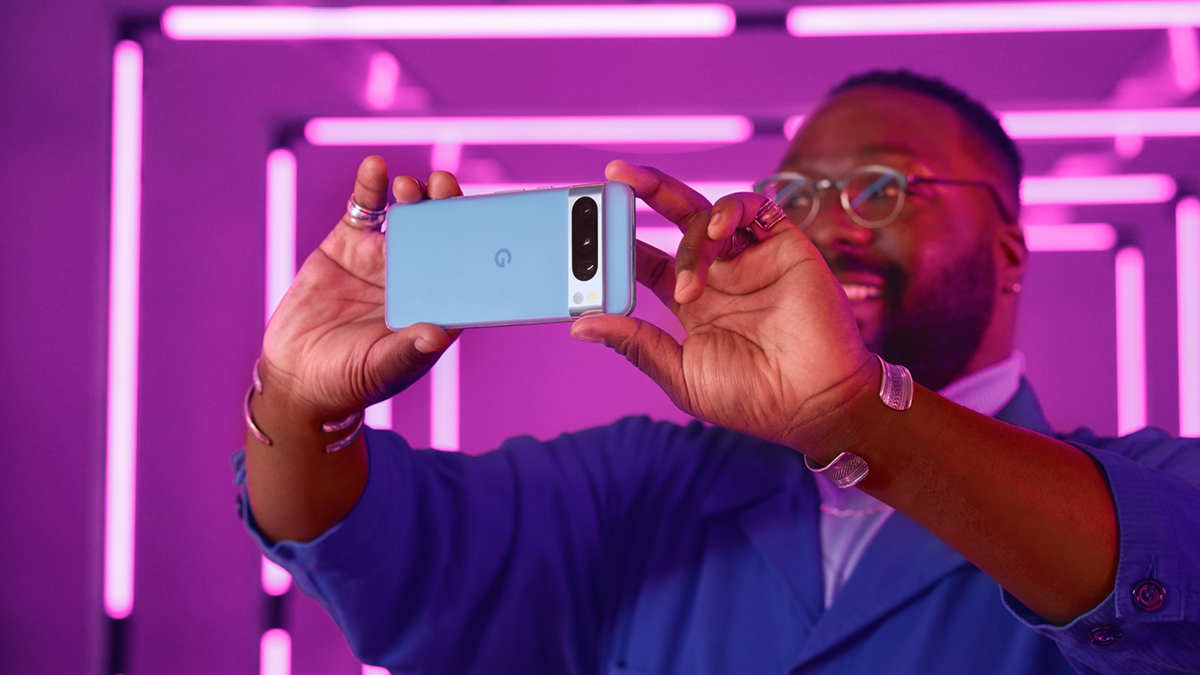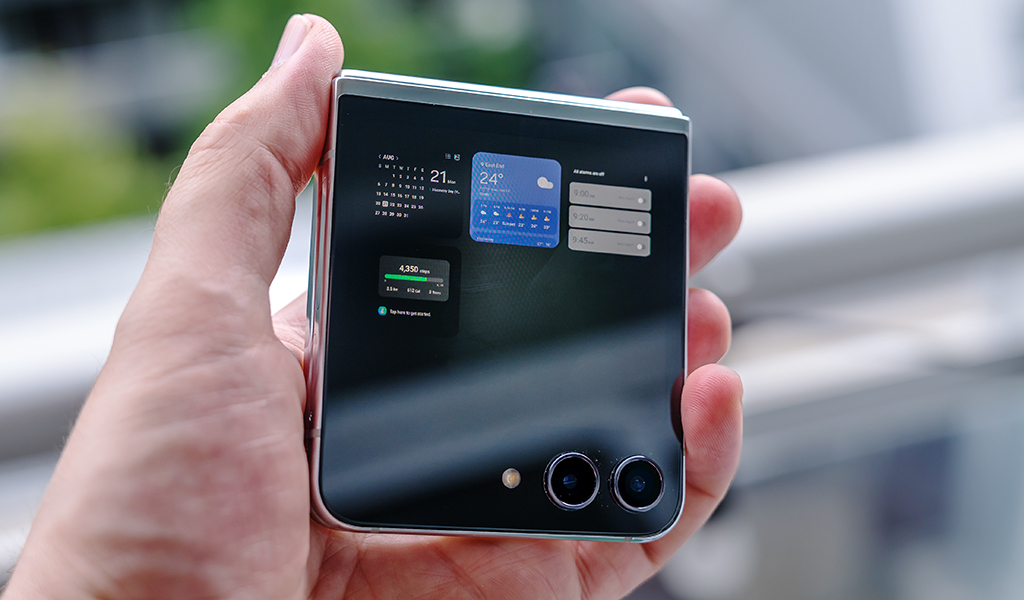
Know someone looking for a new smartphone who prefers it be among the best available? You’ve got some good options to start with for whomever you have in mind.
To be clear, these are what each of these brands would consider to be their best. More than just speeds and feeds, they represent features and functionality meant to be a cut above all others. Bigger and better screens. Fantastic photos and video. Great battery life. A smooth experience. All of those things come into play when you expect to use something elite.
This guide includes all the devices that might be the best fit. All of them came to market in 2023, and represent some of the best handsets currently available. Check out the blog’s phone buying guide to learn what smartphones have to offer.
Google Pixel 8 and 8 Pro

Google addressed a number of things when it created the Pixel 8 and 8 Pro, primarily focusing more of the upgrades and updates on AI technology and camera improvements. There are also more differences between the two devices this time, with the Pixel 8 Pro getting more of the advanced features. They aren’t radically different from each other in design, though do make a few changes from their predecessors, like a flatter and brighter screen, rounded corners, a better fingerprint sensor and matte finish in the back.
You get 12GB of RAM in the Pixel 8 Pro (8GB for the Pixel 8), with 128GB of 256GB of internal storage. Google’s new Tensor G3 chipset powers cool features and functions you won’t see in other models. Magic Eraser and Photo Unblur in Google Photos are still great, and Magic Editor takes things even further with AI-based editing that lets you get even more precise. Audio Magic Eraser can do an incredible job removing unwanted audio from a video. Voice Typing now works with more languages, while Call Screen and Hold for Me are two of the best phone calling features around. The Pixel 8 Pro is also the first phone to get a temperature sensor where you just point at an object and get a reading.
Like all Pixel phones, it’s the cameras that truly stand out. New image sensors and lenses help produce outstanding photos and video when combined with Google’s built-in software computation. The Pixel 8 Pro takes that further with pro-level manual controls to put even more power in the hands of photographers who want it. The front camera works with improved Face Unlock capabilities as well. The cameras are good enough to trust in virtually any situation, from bright daylight to capturing the stars in pitch darkness. When it comes to mobile photography, these are two of the phones to beat.
Want to know more? Check out the full review here on the Best Buy Blog.
Apple iPhone 15 Pro or 15 Pro Max

These are the best iPhones in Apple’s lineup, taking things further from the previous iPhone 14 Pro models. If you want the best iPhone, and have the iPhone 13 or earlier, it may be worth upgrading to one of these two. For the most part, the iPhone 15 Pro and Pro Max are the same, except for their relative size and a few particular specs.
Apple also made them pretty tough out of the box. Ceramic Shield protection for the screen will do a better job warding off scratches and nicks, while titanium edges keep the phones lighter without sacrificing durability. A new Action button above the volume keys adds another shortcut to a favourite app or feature, and Dynamic Island returns as a neat way to do more with the cutout around the front camera. These are also the first iPhones with USB-C ports, opening up a world of possibilities in the accessories you can use with them. Don’t forget about MagSafe, either, the super convenient magnet on the back that’s great for various use cases.
The cameras also improve, led by a 48-megapixel camera with a larger image sensor and the ability to switch focal lengths and capture twice the amount of light in low-light situations. Apple’s A17 Pro chipset makes both phones powerful and efficient with much better graphics performance—a boon for gaming. Either one will work really well with other Apple products, including Macs, Apple Watch, and AirPods.
Samsung Galaxy S23, S23+, S23 Ultra

All three of these phones came out together, and the one you go with depends on need or want. The Galaxy S23 Ultra clearly has the best camera and largest AMOLED display, but the other two are equally capable of running smoothly. Apart from screen size and camera layout, they all share a lot of similarities by running the same software, same processor, and same storage options.
The Galaxy S23 Ultra is still the only one of the trio that comes with the S Pen. If you miss the Galaxy Note, this is like having it all over again, where you pull the pen out of its holster to use anytime you like. The other two don’t work with the pen at all, even if you get it separately, so the focus with those is more on usability and convenience. Samsung updates those phones with the same software the Ultra gets, so you’re never left behind. If you’re a mobile gamer though, the Ultra beats the other two handily.
On the camera side, the S23 Ultra also has features the others don’t. For one, there’s the big 200-megapixel camera and the ability to shoot 50-megapixel RAW images through the Expert RAW app. There are also two telephoto lenses (3x and 10x) instead of one on the other two. So, what stands out about the other S23 phones? They keep things simpler with solid performance, cameras, and battery life.
To learn more about what these devices can do, check out the Galaxy S23 Ultra review, as well as the latest information on the Galaxy S23 and Galaxy S23+.
Samsung Galaxy Z Flip5

Flip phones are slowly making a comeback, even if most people out there aren’t using them yet. One of the most prominent is the Galaxy Z Flip5. Flip it open and you see a 6.7-inch Super AMOLED screen. Clamp it shut and you get a 3.4-inch Cover Screen display to look at for notifications and even access to certain apps. That Cover Screen also comes in handy when it’s time to take a selfie with the rear camera. It also makes it much easier to frame any kind of photo, especially when you prop it up and lay it down on a flat surface. For creativity, the Flip5 is a unique case.
Plus, there’s just something really satisfying about flipping a phone open or closed. The hinge is pretty sturdy, so prying it open won’t feel flimsy. You can keep it closed when using Samsung Pay or controlling compatible Samsung devices, like the Galaxy Buds2 or Buds2 Pro, for instance.
Just bear in mind Samsung’s foldables, like the Flip5, don’t have the best camera output. The cameras are more in line with the Galaxy S22 rather than the S23 lineup. You do have unique ways to capture photos and video, like folding the phone at 90-degrees or various other angles and propping it up to shoot hands-free. You can also do video calls this way by having the front camera face you. Flex mode also helps to use video or certain apps as well.
Despite its smaller size (when clamped shut), it supports wireless charging, and uses a split-battery configuration to keep the lights on for longer. There are few phones out there like it, and certainly few that are as pocket-friendly as this one is.
Want to see how this device looks and feels? Check out the Galaxy Z Flip5 review here on the Best Buy Blog.
Other phones to consider
Note that within this list are multiple choices. If you’re thinking of a foldable, you can also consider the OnePlus Open as a solid alternative that is lighter and thinner than any other like it right now. The same goes for the OnePlus 11, a phone that stacks up well against the other premium models on this list.
Don’t want the Pro or Ultra of a particular model? Look at their siblings, like how Apple complements the iPhone 15 Pro models with the iPhone 15 and 15 Plus, both of which are highly capable. Indeed, they may actually be a better fit for most. You lose out on the telephoto lens, but many of the other camera features still apply.
If premium priced phones are not quite what you’re looking for, there are good affordable phone options to consider too.
Shop smartphones and more online at Bestbuy.ca





